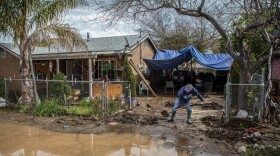A record-setting heat wave is expected to move into Southern California Monday, and will last for two days before it starts to cool down.
Temperatures are predicted to be between 95 and 105 degrees in valley regions and desert areas. The mountains could see temperatures in triple digits as well.
An excessive heat warning was issued from 10 a.m. Monday through 8 p.m. Tuesday for the San Diego County valley areas, Escondido, El Cajon, San Marcos, La Mesa, Santee and Poway, with daytime temperatures expected to range between 95 and 107 degrees, according to the National Weather Service (NWS).
Sunday's highs reached 82 degrees in downtown San Diego, with inland valley areas reaching 97 and deserts ranging from 110 to 114 degrees. Coastal areas were in the high 70s with light winds.
Temperatures in the deserts are expected to reach as high as 116 degrees Monday and 117 on Tuesday.
The hot, dry conditions were also expected to bring elevated brush fire danger in vulnerable areas through at least Wednesday.
Downtown San Diego will remain in the low 80s through the early part of the week, but will drop to about 77 on Thursday, with a significant cooling trend expected heading into next weekend. Most of San Diego County will continue to be in the high 90s, but will cool down by the end of the week.
The NWS advises drinking plenty of fluids, staying in an air-conditioned room, staying out of the sun and checking up on relatives and neighbors.
Children and pets should never be left inside vehicles without air conditioning for any length of time, as death could occur in minutes when temperatures are high.
Officials suggest learning the signs and symptoms of heat exhaustion and heat stroke, and to wear lightweight, loose-fitting clothing when possible.







